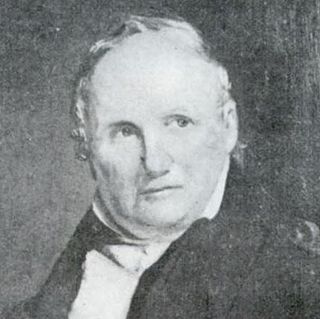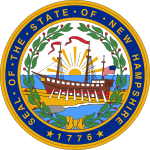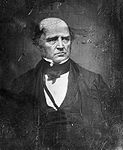
The 1822–23 United States Senate elections were held on various dates in various states. As these U.S. Senate elections were before the ratification of the Seventeenth Amendment in 1913, senators were chosen by state legislatures. Senators were elected over a wide range of time throughout 1822 and 1823, and a seat may have been filled months late or remained vacant due to legislative deadlock. In these elections, terms were up for the senators in Class 2.

The 1802 New Hampshire gubernatorial election took place on March 9, 1802. Incumbent Federalist Governor John Taylor Gilman won re-election to a ninth term, defeating Democratic-Republican candidate, former Governor and U.S. Senator John Langdon.

The 1803 New Hampshire gubernatorial election took place on March 8, 1803. Incumbent Federalist Governor John Taylor Gilman won re-election to a tenth term, defeating Democratic-Republican candidate, former Governor and United States Senator John Langdon in a re-match of the previous year's election.

The 1804 New Hampshire gubernatorial election took place on March 13, 1804. Incumbent Federalist Governor John Taylor Gilman won re-election to an eleventh term, defeating Democratic-Republican candidate, former Governor and U.S. Senator John Langdon in a re-match of the previous year's election.

The 1809 New Hampshire gubernatorial election took place on March 14, 1809. Incumbent Democratic-Republican Governor John Langdon was defeated for re-election by Federalist candidate, Chief Justice of the New Hampshire Superior Court of Judicature Jeremiah Smith.

The 1820 New Hampshire gubernatorial election was held on March 14, 1820.

The 1821 New Hampshire gubernatorial election was held on March 13, 1821.

The 1822 New Hampshire gubernatorial election was held on March 12, 1822.

The 1831 New Hampshire gubernatorial election was held on March 8, 1831.

The 1832 New Hampshire gubernatorial election was held on March 13, 1832.

The 1812 New Hampshire gubernatorial election was held on March 10, 1812.

The 1808 New Hampshire gubernatorial election was held on March 8, 1808.

The 1807 New Hampshire gubernatorial election was held on March 10, 1807.

The 1806 New Hampshire gubernatorial election was held on March 11, 1806.

The 1811 New Hampshire gubernatorial election was held on March 12, 1811.

The 1817 New Hampshire gubernatorial election was held on March 11, 1817.

The 1818 New Hampshire gubernatorial election was held on March 10, 1818.

The 1819 New Hampshire gubernatorial election was held on March 9, 1819.

The 1833 New Hampshire gubernatorial election was held on March 12, 1833.

The 1849 New Hampshire gubernatorial election was held on March 13, 1849.











